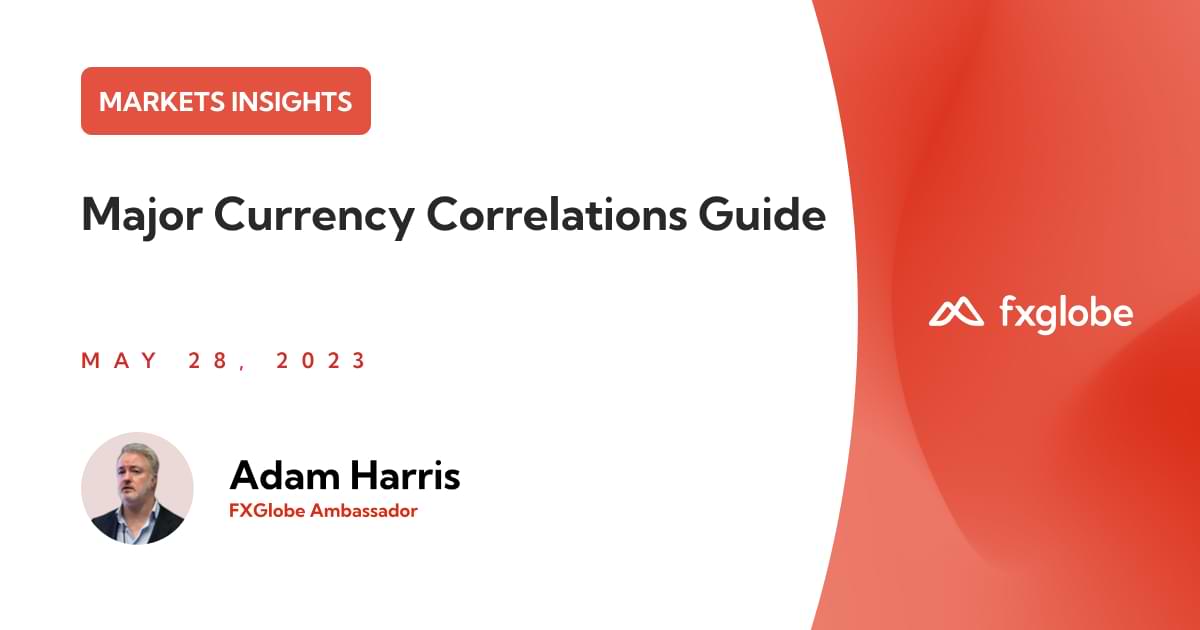The world of major currency correlations can be confusing. At times, it leaves even the most experienced traders bewildered! The fluctuating and contradictory tendencies of relationships between currency pairs make predicting their movements a real challenge.
Economic data releases—like GDP growth rates and inflation figures—along with central bank policies are among the vital factors shaping the course of currency pairs’ movements. Interest rate decisions are another excellent example of how policy changes can significantly impact these correlations.
However, despite these known factors, many top major currency correlations remain puzzling. For instance, EUR/USD and USD/CHF share proximity in geography as well as similar economic structure, yet possess a bizarrely negative correlation. At the same time, closely-located AUD/USD and NZD/USD have export-oriented economies in common but a robust positive relationship. Strange indeed!
Understanding the Basics of Major Currency Correlations
Major currencies are like puzzle pieces that fit into each other in different ways—some positive, others negative. If you’re looking to make it big in forex trading, you need to understand how all the parts work together.
But these connections aren’t set in stone—they can change at any time. There are plenty of factors outside a trader’s control that influence them. For example, economic data releases; figures like GDP or employment stats can flip everything on its head and make even experienced traders second guess themselves. To see this in practice, just look at how US job numbers had a ripple effect on both USD and JPY.
When it comes to the correlation between major currencies, geopolitical events are a critical factor, too. Beyond country borders, political unrest and tensions create waves that affect related currency pairs. Traders must stay alert for any global news events that may throw things off balance. Overlooking this kind of information can lead to missed profit opportunities—or worse, unexpected losses.
In today’s intricately connected financial world, it’s vital to monitor major currency oscillations with laser precision. If you want to place successful trades, not based solely on luck or intuition, it’s trading 101!
Factors Affecting Major Currencies Correlations
Unraveling the mystery surrounding major currency correlations is like picking apart a complex tapestry. We could think of the tapestry as having three main “threads”:
- Economic data
- Political happenings
- Market sentiment
It’s difficult to anticipate how each of these will tie together and affect currency prices. Often, their impact catches everyone off guard.
Typically, investors seek out a given country’s currency if it shows growth potential; this could be due to strong economic indicators like GDP, inflation rates, or employment figures.
Yet trade plans can often get derailed thanks to political instability or other unpredictable outcomes, like election results, that make investors wary.
Market sentiment also acts as a key factor in determining how major currencies correlate with each other—especially during phases where either risk-taking or high caution is dominant. During times of heightened risk appetite, traders may be more willing to take chances on emerging markets or currencies tied to commodities.
Nevertheless, in times of high uncertainty and risk aversion, traditional safe-haven assets such as the US dollar and Japanese yen tend to gain favor.
To excel in forex, it’s important for traders to keep track of all these underlying price drivers to identify the best potential opportunities. But that’s not all—holistic awareness of all the moving parts helps minimize risks associated with unforeseen price movements.
The Top Major Currencies Correlations to Watch Out For
Navigating major currency correlations can be a daunting and complex task to master. One particular correlation that traders find intriguing is the inverse relationship between the US dollar and gold. It’s no surprise that so many have their sights set on this pairing! Watching one currency rise while the other falls is like observing an unpredictable dance playing out right before your eyes.
However, there are plenty more exciting correlations to pay attention to, such as USD and JPY which move in opposition like yin and yang. Traders see this pair as an effective strategy against market volatility; taking long positions on USD while simultaneously holding short ones on JPY helps protect against potential losses impressively well.
Lastly, let’s not forget about EUR/USD—or what could be described as the heavyweight champion of major currency pairs. The economies of Europe and America have been intertwined for decades creating significant waves in both markets. It’s why traders regard this pair as an essential barometer of global economic health worth paying close attention to.
To succeed as a trader, it pays off to simplify your approach when you can. One way to do this is by monitoring major currency correlations on a regular basis while keeping an eye out for news related to global monetary policies. Armed with this information, you can confidently navigate the markets while minimizing risk and maximizing potential returns.
How to Profit from Major Currency Correlations
The world of major currencies correlations may be complicated, but it’s also full of potential for savvy traders looking to make a profit. One approach they use to do this is hedging—opening two positions at opposite ends to protect yourself from losses while still giving yourself room for gains.
For example: if you’ve taken a long position on the EUR/USD pair and see its negative correlation with the USD/JPY pair, why not open up a short position there? Then, even if one side takes some hits, your investment has some backup protection. Another way to turn major currencies’ intercorrelations into dividends is by focusing on trading news events.
These releases—like GDP reports or central bank announcements—carry huge implications for currency pairs’ values. Traders who stay informed about them, and understand how they might move various currency pairs in correlation, will be well poised to benefit from market movements ahead of or after these key events.
If you want to succeed in trading major currencies, you need a solid understanding of key market indicators, like the relative strength index (RSI). By monitoring these metrics closely over time, skilled traders can spot trends and patterns that others miss—like oversold currency pairs with positive correlations that are ripe for a rebound.
Expert Tips for Successful Trading in Major Currencies Correlations
Are the murky waters of major currency correlations causing you confusion? You’re not alone! The key is to invest in your knowledge—before you invest in the markets.
To start with, it’s crucial to understand how different currency pairs are interconnected and influence each other. Armed with this knowledge, you’ll be able to make well-informed trading decisions.
Additionally, stay alert for economic events or news releases that could have far-reaching impacts on multiple currency pairs. Even seemingly small developments can cause significant market movement!
And of course, always prioritize risk management when navigating major currencies. Set stop loss orders and avoid risking all your capital on one trade. These tactics will help keep you resilient against unexpected changes in the market.











